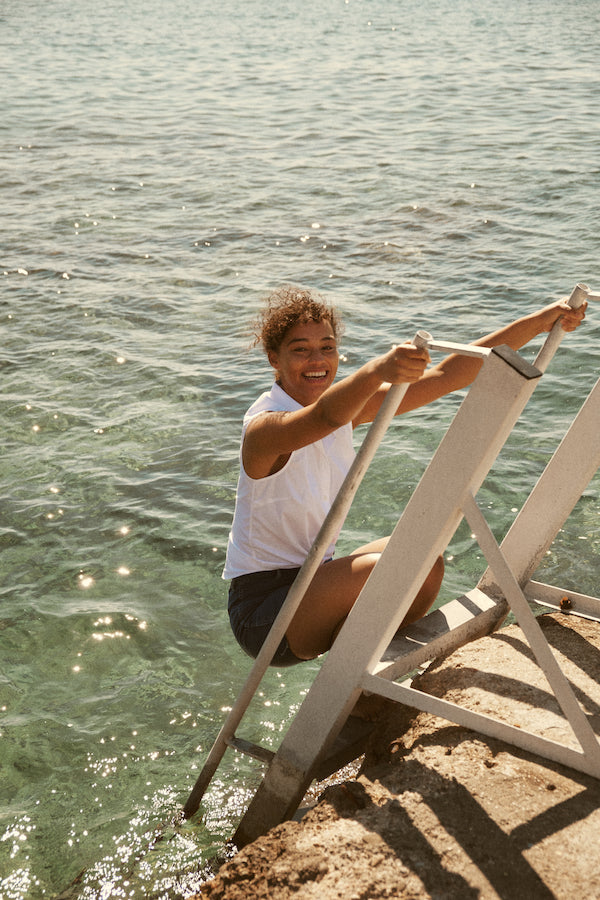Grammar’s Founder and Designer Althea Simons’s commitment to better production processes––including using GOTS (Global Organic Textile Standard) certified cotton and fair labor practices––is just one part of what good business means to her. Recently, Simons reflected on and described some of the key business decisions that she values and fights for, including garment fit and sizing, model casting, and creative collaborations.
In the following discussion, which has been edited for brevity, Simons talks about how her decisions in these areas differ from the status quo, and align with her business goals and personal values.
Callie:For you, everything begins with the sample garment––the prototype for a new design. Can you tell me a bit about your approach to making sample garments and why this is the foundation for future decisions?
Althea:My samples are a size six. Most models are a size zero. They don’t look good in my clothes because my clothes are made for real bodies. This decision to make a sample size larger than the industry’s standard is reflected in and determines the types of models I choose.
Callie:When you say your clothes are made for “real bodies,” what do you mean?











